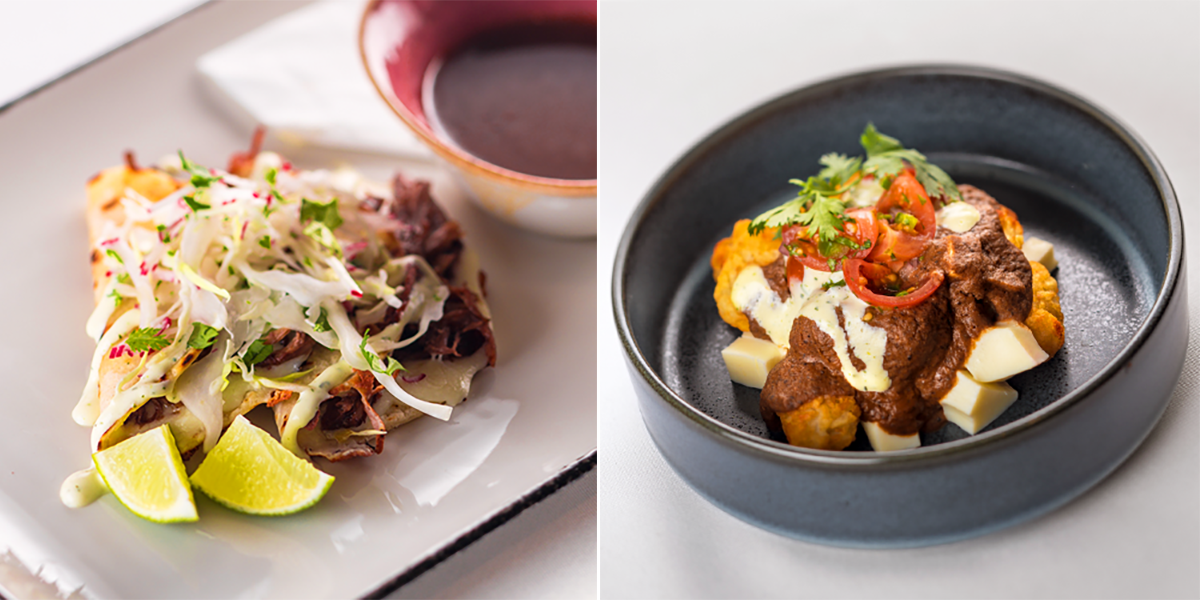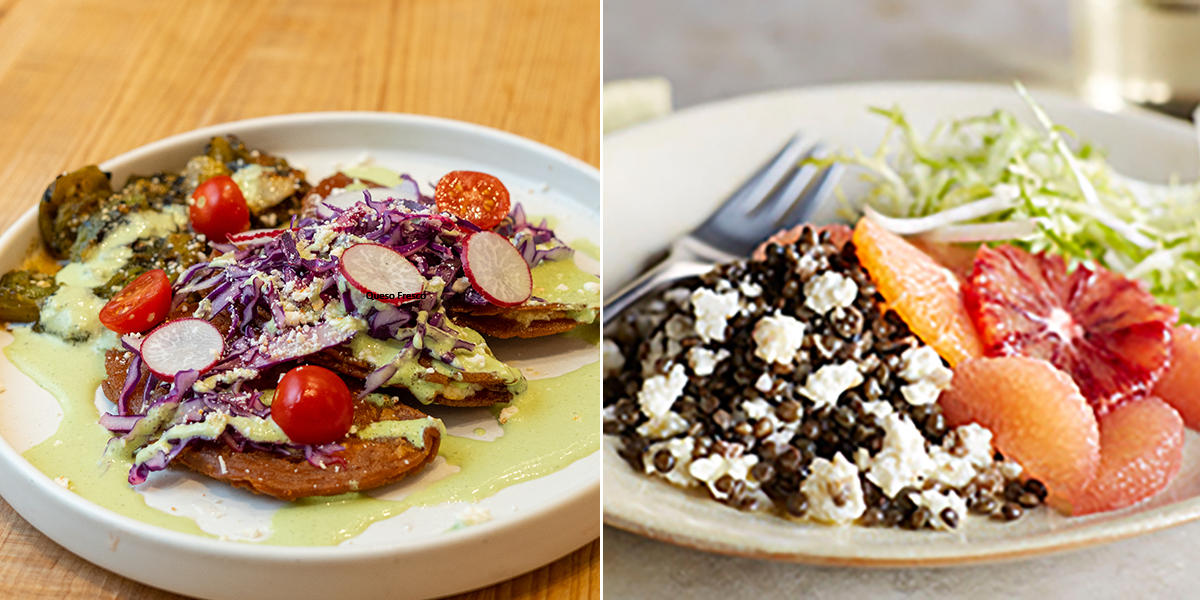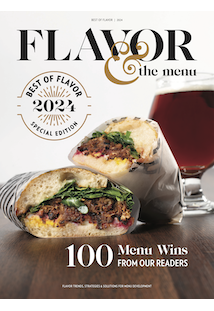
SPONSORED CONTENT
Give Menus Some Mex Flex
Three versatile Hispanic-style cheeses you should know better
Give Menus Some Mex Flex
Three versatile Hispanic-style cheeses you should know better
By Flavor & The Menu
September 18, 2024
By Flavor & The Menu
September 18, 2024
When dining out, consumers who might content themselves with buying generic “Mexican-style” cheese blends at retail can begin to develop a discerning appreciation for the distinctive flavor, textural and performance characteristics of individual cheeses from Mexico and Latin America. The list includes more than 25 varieties, from the spicy, crumbly enchilado to the nutty, mellow Mexican manchego to the mild, meltable Menonita.
Today’s chefs and menu developers can do their part to broaden diner awareness by taking full advantage of the versatility of Hispanic-style cheeses, discovering their potential to freshen up existing menu items while inspiring culinary creations. California’s rich Latin culture and heritage help make the state one of the leading producers of several varieties of Hispanic-style cheese. Three of these are worth a closer look, thanks in large part to their adaptability and potential for easy explorations: Cotija, Oaxaca and queso fresco.
COTIJA

Crumbled or sliced, Cotija brings flavor distinction to traditional Breakfast Enchiladas (left) and the contemporary Chipotle Chicken and Cotija Slider, on the left in the trio of sliders featuring California dairy.
With a profile similar to feta, the white and crumbly Cotija brings a salty, pungent flavor to a wide range of dishes, such as soups, salads and the still trending elote/esquites. Moisture content will vary by manufacturer, ranging from semi-firm to very firm. Crumbles and grated formats are most popular, but Cotija is also available in blocks that can be sliced or shaved. When aged, Cotija is often referred to as queso añejo.
Real California Cotija delivers both flavor authenticity and eye appeal to traditional Mexican dishes, such as Breakfast Enchiladas. But it also works well in other applications. For example, sprinkle it on popcorn for an elevated starter that brings a boost of protein and umami. Adapt your Mediterranean bowl for a Southwest or Latin version, using chicken or pork, peppers, beans and corn, herbs and spices from the Mexican pantry and a generous helping of Cotija. Lightly grill slices to top chile powder-rubbed chicken for a Chipotle Chicken and Cotija Slider. Refresh a pasta favorite by swapping Cotija for the traditional grated Parmesan. In fact, Real California Cotija can serve as a flavor substitute for Parmesan—and Asiago—in other dishes, including Caesar salads and wraps.
OAXACA

Cal-Mex Quesabirria (left) and Plant Forward Cal-Mex “Poutine” (right) lean into Oaxaca for its sweet, slightly salty flavor, showcasing its menu versatility.
Some consider Oaxaca the Hispanic equivalent to mozzarella, particularly its textural properties, while others compare its flavor to an unaged Monterey Jack. This mild, semi-firm white cheese boasts a distinctive appearance—a braided ball—said to reflect the braided silver crafted in the Mexican town that lends the cheese its name. Oaxaca has excellent melting characteristics, making its sweet milk flavor the perfect topping over pizzas, nachos and handhelds or filling for poblano peppers, enchiladas and quesadillas.
While pizza may be among the first items that come to mind when considering how to expand use of Real California Oaxaca on the menu, don’t lock solely into mozzarella swaps. Real California Oaxaca could be the centerpiece of a divine grilled cheese sandwich or stuffed into an omelet and served with avocado. Spike it with some chorizo crumbles for a craveable dip. Bread and deep fry cubes of Oaxaca cheese to create a warm, melty twist on croutons tossed into salad. Ladle the melted cheese over tater tots for a Plant Forward Cal-Mex “Poutine.” Chefs can also turn to Oaxaca from California to refresh or elevate different Mexican signature dishes. Shredded Oaxaca topping a Cal-Mex Quesabirria delivers a subtle flavor balance. And as some operators lean into less-familiar regional dishes from Mexico, they are exploring the cuisine, flavors and ingredients of Oaxaca, the state, which naturally include the cheese.
QUESO FRESCO

The enduring popularity of queso fresco makes it a natural choice for Mexican menus as well as for modern American concepts. Both the traditional Tres Queso Enchiladas Potosinas (left) and the unconventional Beluga Lentil Salad (right) demonstrate how this cheese can elevate different dishes..
Translated simply as “fresh cheese,” queso fresco is considered one of the most popular of the Hispanic-style cheeses. White, soft, moist and mild, queso fresco has a hint of saltiness and acidity that can help cut through the rich unctuousness of many traditional Mexican dishes, like enchiladas. Also popular is queso blanco, a kissing cousin to queso fresco, made using slightly different techniques, but often employed interchangeably in recipes.
Queso fresco doesn’t melt, but it is often used as a crumbly topping or filling. Chefs can use it as an alternative to feta or goat cheese. Try pairing queso fresco and a fried egg in a breakfast torta or use it to bring depth and complexity to avocado toast. Add it to scrambled eggs or omelets; it won’t melt, but the texture will soften. Fried cubes of queso fresco from California make for a craveable topping to a casserole. Combine with other Hispanic-style cheeses—such as requeson and enchilado—to bring creamy indulgence to Tres Queso Enchiladas Potosinas. Real California queso fresco works equally well as a finish for mac and cheese as it does for a fruit plate, and it’s an ideal element in many greens, grains and fruit salads, including category-defying options such as Beluga Lentil Salad.
A PRO KNOWS

El Pollo Borracho, the Grand Prize winner in the 2023 Real California Pizza Contest, from Chef Bill Crawford, Righteous Slice, Rexburg, Idaho, features Oaxaca and queso fresco cheeses from California.
“I grew up in Arizona and Southern California. Going out to eat was a rare treat, but when we did, our family often enjoyed local Mexican restaurants. Today, I still have a real fondness for the flavors and textures of Mexican cheeses,” reminisces Bill Crawford, chef/owner of Righteous Slice, a fast-casual pizzeria in Rexburg, Idaho. “There is something special about the smooth melt and brown speckling of Oaxaca cheese and the moist, delicate texture of queso fresco,” he says of the cheesy finish on his El Pollo Borracho pizza, which was the Grand Prize winner of the 2023 Real California Pizza Contest, and has taken top honors in other state, regional and international competitions.
According to Crawford, Hispanic-style cheeses have some familiar characteristics found in their Italian counterparts, but their differences make them stand out in certain applications. “For example, Real California Oaxaca cheese is similar to low-moisture mozzarella, but it tends to be a little saltier and gets a distinctive browning effect that gives pizza a really cool presentation,” he explains. “And Real California queso fresco is a crumbly cheese that looks a lot like Parmesan or Romano cheeses, but is soft and moist. It also doesn’t melt like other cheese, so pizza gets a soft mouth feel, along with a nice pop of salt that complements other flavors.”
In developing the El Pollo Borracho, “I wanted to create something that would take me back to the fondest memories of my childhood, while incorporating the best of what I’ve learned since I first started making pizza,” says Crawford. “That’s where the Oaxaca and queso fresco cheeses came together for me. Then I added roasted fresh local corn and grilled tequila-lime chicken.” He concedes that considerable trial and error was involved. “I made a lot of versions, testing the flavors and tweaking it until the final version spoke to me.” The award-winning build also features lime-pickled red onions, crème fraiche, Tajin, cilantro and fresh lime wedges to deliver the “right” balance of salt and acid. The pizza has no sauce, so all the ingredients are crispy at service. Righteous Slice adds the El Pollo Borracho to the menu when corn is at peak season.
Crawford speaks highly of his decision to source Hispanic-style cheeses from California, calling them “some of the highest quality cheeses you’ll find anywhere.” Crawford also appreciates that many California dairies are multi-generation operations. “When you use Real California cheese, you’re not only serving the best for your restaurant guests, you’re also supporting family businesses,” he says.
Discover the modern menu advantages found in Hispanic-style cheeses and other dairy products from California. Click here for menu ideas, recipes and more.







